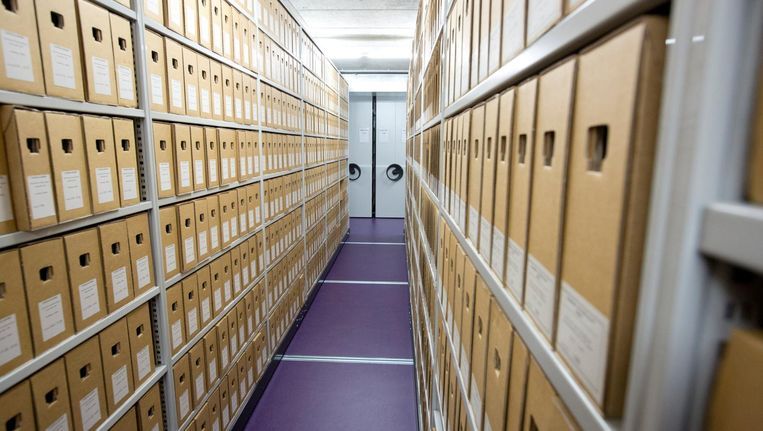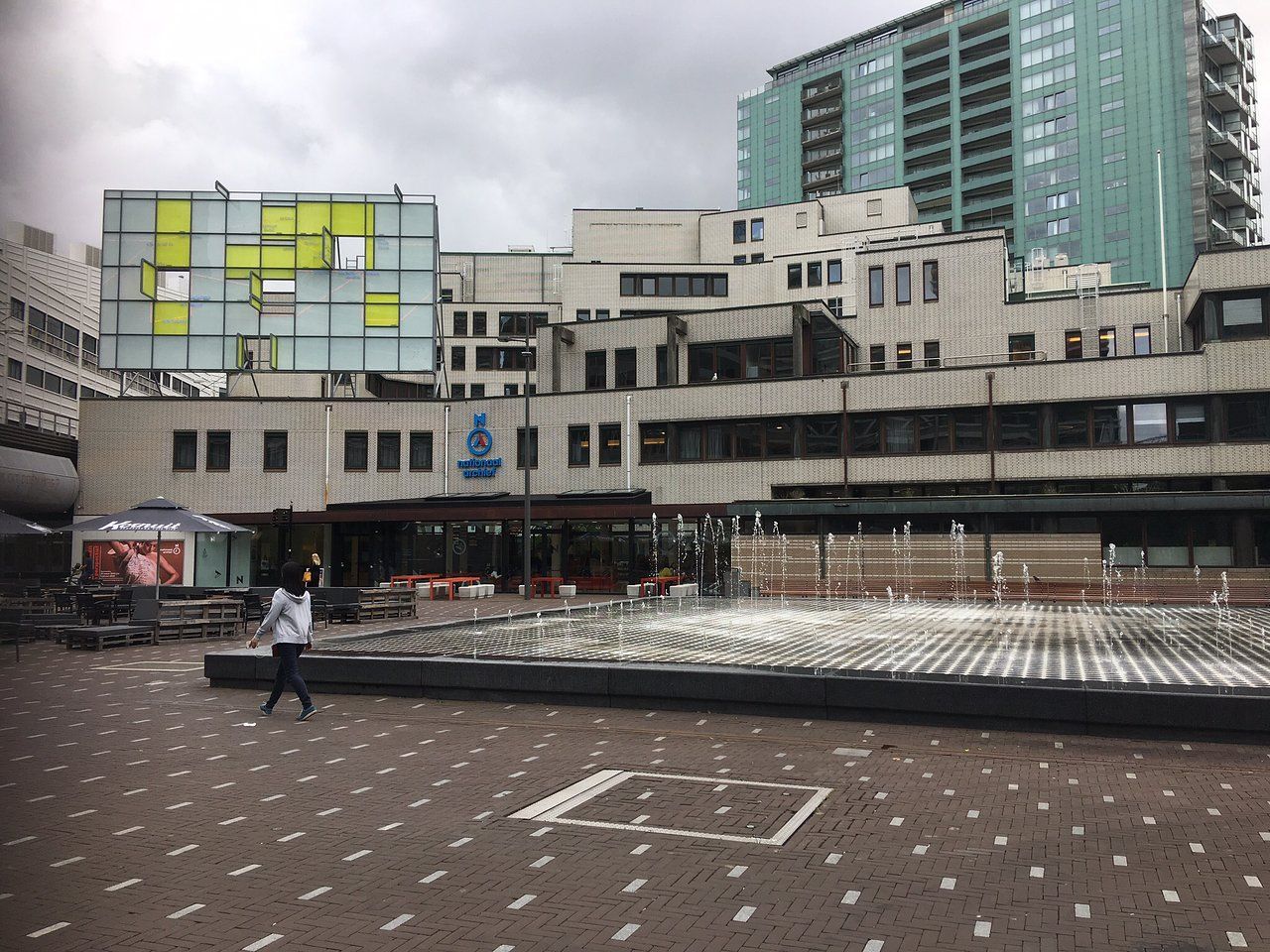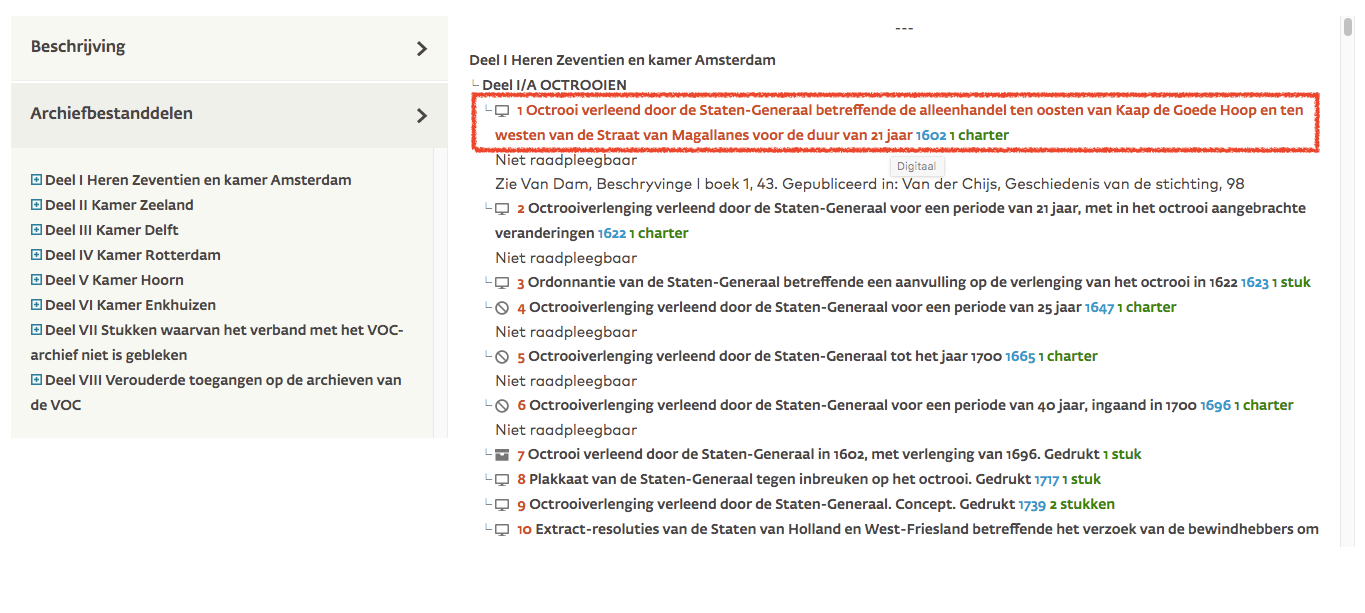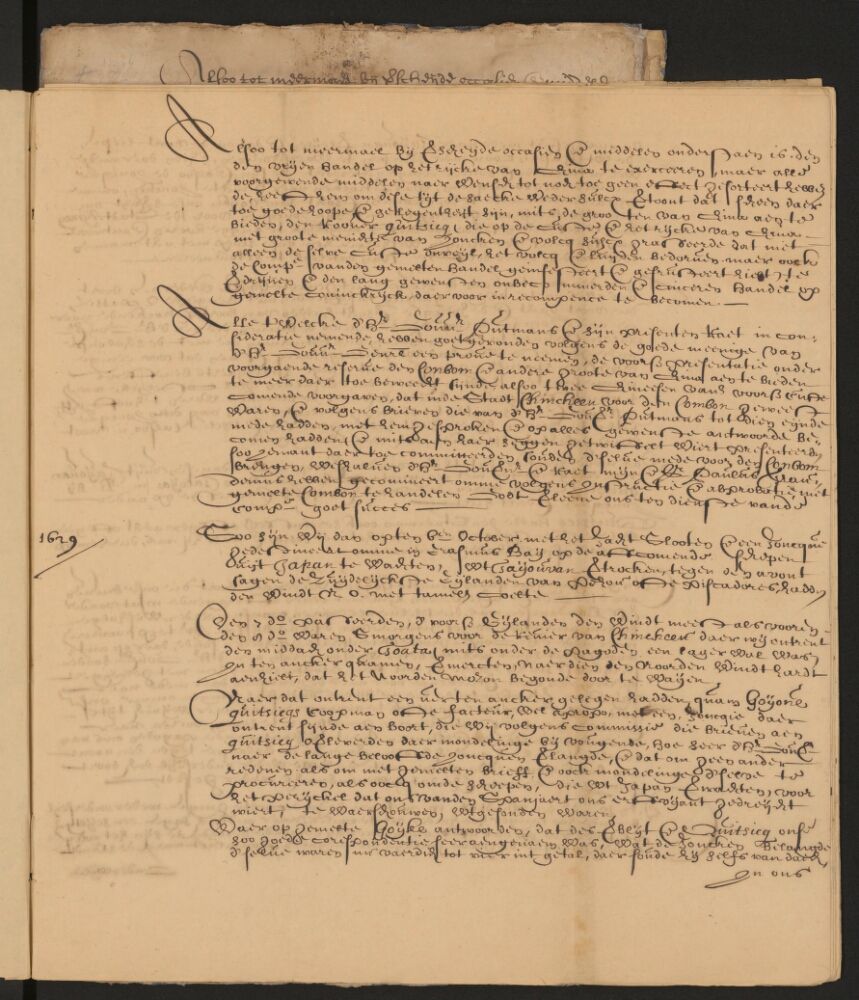
來自太巴塱部落的阿美族人,2009 年到荷蘭萊頓大學從事十七世紀台灣史研究,之後定居荷蘭。目前以翻譯、寫作、研究為主業,並參與國際原住民族運動。曾獲 2017 年台灣文學獎原住民短篇小說獎。已出版小說有《絕島之咒》,翻譯專書有《地球寫了四十億年的日記》、《西班牙人的台灣體驗》、《故道》等。
One of Pandora's Archives|The Fundamental Logic of the Archives World 1/2 (Let Love Generate Electricity Season 2)
The first article in the plan, "The Fundamental Logic of the Archival World", was much longer than originally planned, so it was published in two parts. The first paragraph published today mainly discusses archives that are intuitively understood by ordinary people , and uses a specific historical material as a more detailed example. The second paragraph to be published next time is about the archives world of archivists .
<br class="smart"> Introduction: "The Lattice Incident" at the National Archives in The Hague
Where can I find the charter of the United Dutch East India Company in 1602?
Why do you need to understand the logic of archiving when using archives?
Postscript Supplement: Instructions for Taiwanese readers about Taiwan-related historical materials in the National Archives in The Hague

"The Lattice Incident" at the National Archives in The Hague
Welcome to Pandora's archive. Today we are interviewingYan Pluish , a strategic advisor to the National Archives of the Netherlands and a professor of archives at the University of Amsterdam. Before officially entering the theme, Yan Plushi wants to share with you a little story that happened in the National Archives in The Hague.
Yan Plover recalled that the incident happened around the fall of 2009 or 2010. At the time he was teaching students at the National Archives as a professor of archives at Leiden University. They were crowded into a small conference room that day. Seven or eight students sat around a square conference table, and Yan Plough was standing in front of a large cardboard with grid lines. The big cardboard on the stand was their makeshift blackboard for the day.
"The other day we were talking about the concept of classification . This concept seems to be common and everyone understands it, but in fact everyone thinks very little. I asked the students that day to start with what was in the conference room, and everyone came up with their own Classification, let’s compare the similarities and differences between everyone’s classifications.”
Speaking of which, there was nothing in that conference room. There are walls, carpets, tables and chairs. There are professors and students. The students brought some things into the meeting room, such as backpacks, pencils, etc. The professor stood in front of a large cardboard with a black whiteboard marker in his hand. In addition, there were some cardboard boxes piled up in the corner, and even Yan Plough didn't know what was inside.
"It's over, that's what I thought at the time." Yan Pushi recalled, "There were not many things at the scene, and the students were not interested, so probably no one would suggest any classification. I was asked to speak for another forty-five minutes by myself! "
However, it was unexpectedly unexpected that a student said that he could come up with a classification for this space, and that classification seemed very strange at first glance - the student put the Yanchushi, the large cardboard standing behind him, the other A student and his notebooks are grouped into a total of four items, and the rest of the people and objects in the room are grouped into another category.
"What is the classification standard?" the classmate who was classified asked.
"Lattice," replied the student who proposed the classification, "Mr. Yanpushi wears a plaid shirt, and you also wear a plaid shirt. The cardboard has grid lines, and your notebook also has grid lines. The four of you are one type. But the type of grid is different. They are almost the same, so the four members of this category are also different. Cardboard and notebooks can be counted in the same subcategory, and you and Mr. Yan Plushi are each a subcategory of their own."
After class that day, the student who proposed the plaid classification leaned over and asked Yan Plover in a low voice, "Do you have a plaid shirt?"
"Ah? Yes." Yan Lingshi was quite puzzled by this question.
"Really? Then why not consider wearing a non-plaid shirt occasionally?" The student said with a smile, "No matter where I see you this semester, you're wearing a plaid shirt."
"After that, I didn't wear a plaid shirt at all for about a whole year." Yan Lingshi spread his hands, "The aftertaste is not good, it seems that people see through."
This is Yan Plover's retrospective commentary on the thought-provoking "Grid Incident" ten years later. But he didn't bring it up for the sake of the gossip class.
" Categorization is a conscious, purposeful activity, " he further explained. "Archives are just that kind of thing. If you step into an archive and don't know what logic the archives you're facing are built on, you have no way of getting out of it. Look up anything. Libraries are probably the closest and most familiar example. If you don’t know the classification of books, you don’t know where to look for books.”
"Excuse me, what was the purpose of that student of yours doing the grid classification?" I interjected.
"Deal with the professor! Do you even need to ask?" Yan Lingshi looked at me like an idiot.
Of course, since the popularization of computers and the Internet, the logic of querying data has changed a lot, but that is a problem at the level of file usage and does not directly affect the construction of files. After so many centuries, archiving is still a highly purposeful activity.
Knowing this, let's start today's topic from here.
⇩ The archives of the National Archives in The Hague (archives are not open to the public)

If you have nothing to do and want to go to the archives
Imagine that you are a history buff who just happened to have the opportunity to travel to the Netherlands. You wandered around The Hague, visited the Hague Inner Court , visited the Peace Palace where the International Court of Justice and the Permanent Court of Arbitration are located, visited the Maurice House Art Museum, and when you stepped into the main train station in The Hague to take a ride elsewhere, you found that The National Archives is right next to the main train station.
You remember reading in the book that the Netherlands has fought an eighty-year war of independence with the Spanish Empire since the end of the sixteenth century, and the reason why they were able to survive this pre-modern unrestricted war is all thanks to The business activities of the United East India Company abroad. Of course, from today's point of view, the Dutch relied on exploiting people and resources on the other side of the world to achieve their own nation-building cause, but leaving this aside for the time being, you would want to go to the National Archives to see the era of maritime trade. documents left behind.
You know that the Netherlands United East India Company (VOC) is the first multinational joint stock company in the world. It was authorized by the Dutch Parliament to engage in monopoly trade overseas. It not only has a wide range of activities, but also has been granted a part of state power, which can even be used overseas. Declare war and conclude treaties. You want to see the original charter and see history, so you step into the National Archives, which is a poor building.
⇩ Yan Plover: "This building is not very good, it is a concept and style of the 1980s, the east and the west are like Lego blocks, but it creates a considerable storage space for our endless archives (we The total length of the archives has been approaching 200 kilometers). If you are facing the National Archives, then the Hague Main Station is on the immediate right, and on your left is the National Library of the Netherlands, which is connected to the National Archives by a sky bridge. "

⇩ Yan Lingshi: "Anyone can enter the National Archives, the space inside is quite friendly. Frankly speaking, if you are just tired from walking and want to go in and sit on the sofa that our taxpayers paid for, no one will have it. Opinion. I have also seen passing Muslims who did not arrive at the designated point in time, and simply ran into the hall to perform rituals. Our clean floors are perfect for this activity, and there is air conditioning in summer and heating in winter, so everyone is welcome to come in.”

But the good times end there. You're in the National Archives, but you don't know how to get to that famous charter. After inquiring at the counter, you put all your purses, coats and other clothing in the locker, and enter the reading room of the archives according to the prescribed procedures, and then you can only worry about the many archives, not to mention that those lists are all in Dutch, even if You know Dutch, the contents of those lists are like a book of words, and the codes next to them are even more dizzying.
So you ask a certain researcher sitting next to him who appears to be Dutch: "Excuse me, where are the files of the United East India Company?"
This man was very helpful and used his knowledge to help you find the inventory titled Inventory of the United East India Company 1602-1795 (1811) , number 1.04.02 .
"The meaning of this 1811," the Dutch guy kindly explained, "is that this inventory was created by the archivists in 1811, not by the archivists between 1602-1795."
Now you have the inventory of the Dutch East India Company. and then? Do you have to check one by one from the first file? There should be a lot of information, right?
"Excuse me," you ask the kind Dutch man again, "how many files does the East India Company have?"
"It's 1.2 kilometers . It's 1.2 kilometers in length with all the documents put together."
This makes you instantly pissed off. "How could I possibly read 1.2 kilometers of files?"
"What are you looking for?"
"Charter issued by Congress to the East India Company in 1602."
The Dutch guy was very surprised, "That's the first information! Even if you start from scratch, you can find it!"
The picture below is the " Charter of Exclusive Commercial Activities issued by Congress in 1602 for a period of 21 years from the Cape of Good Hope in the east to the Strait of Magellan ", file number 1.04.02 1 , it is indeed the first information in this file. But how does the Dutch dude know that this material is the first in the file? (Assuming he doesn't have a penchant for memorizing file lists)
⇩ 1.04.02 1
In 1602, Congress issued a 21-year charter for exclusive business activities from the Cape of Good Hope in the east to the Strait of Magellan in the west.

What is the filing logic?
Summary of the previous situation|Yan Lingshi believes that "the most representative story about archives "
It happened during the French Revolution. You know, the French are crazy. At first the thugs burned a lot of the ruling class, including archives, because that was the symbol of power they wanted to spurn. But the burning situation is not right. Some people think that if they continue to burn like this, the evidence that they have poisoned the people will be burned. Without evidence of their tyranny, where is the justification for our rebellion? So the thugs began to zealously protect the archives. That's how the concept of the modern National Archives was born, like so many other things, at the hands of French thugs. From an archival point of view, archives have always been a tool to justify power through historical writing.
The filing logic of each archive is different, but the modern concept of archives comes from the concept of national archives that sprouted during the French Revolution. Therefore, we can say in the simplest way that archives are often the archives of institutions, and the logic of institutions often determines the construction of archives logic .
So, why does the Dutch dude know that's the first dossier? Assuming that he did not memorize the contents of the inventory, it should be because he understood the logic of the file, and he could draw conclusions with simple reasoning.
The Dutch East India Company archives, as the name suggests, are the records of documents left by the company's operating activities, so the way these documents are preserved must be closely related to the way the company operates. with this logic.
⇩ Next, we will use the online query system of the National Archives to explain. First we enter the Inventory of the United East India Company 1602-1795 (1811) numbered 1.04.02. On the left are the eight main categories, on the right are the archive items arranged by number, the first document framed in red is 1.04.02 1 "A 21-year exclusive business issued by Congress in 1602 from the Cape of Good Hope in the east to the Strait of Magellan in the west. Activity License".

On closer inspection, the eight main categories on the left are: ➀ Seventeen Directors and Amsterdam Chamber of Commerce, ➁ Gerland Chamber of Commerce, ➂ Delft Chamber of Commerce, ➃ Rotterdam Chamber of Commerce, ➄ Horn Chamber of Commerce, ➅ Enkhausen Chamber of Commerce, ➆ and East Chamber of Commerce Indian company files irrelevant documents, ➇ East India Company file obsolete entries.
➆ and ➇ are obviously close to "other/miscellaneous", focusing on the first six categories, clearly showing that the archives are based on the chamber of commerce, although we don't yet know if this refers to the chamber of commerce that issued the document, or whether it was received Documents Chamber of Commerce. Details like these are the homework that historical researchers must do before they can do archival research.
Well, come to our friendly Dutch dude who knows that these chambers refer to the chambers that received the documents. Since the first category is the "Seventeen Directors of the Dutch East India Company and the Amsterdam Chamber of Commerce", and the charter is received by the seventeen directors from Congress on behalf of the company, shouldn't this document for the establishment of the chartered company be listed in the first category? ?
Of course, this is a situation we designed, just for the convenience of everyone to understand. In fact, you don't have to look for a good Dutch dude in the reading room if you want to look up this charter in the National Archives, just ask at the counter. You'll get an answer right away: "Seventeenth Century United East India Company archives are forbidden . But you can go to the reading room and read the microfilm."
You don't have to hear the notoriety of microfilm and run away, because this material is a major historical material. Although it is a non-retrievable (niet raadpleegbaar) material as shown on the inquiry page, it has been digitized (digitaal) and is open for free download. The image is parsed .
However, not all huge archives have been digitized, and convenient retrieval systems are still available. Researchers often still have to spend precious time between the vast inventory, so it is not necessary to make good use of an archive. In the end of wasted effort, you must first familiarize yourself with the compositional logic of files.
This is the relationship between historians and archives in general. Archives build archives with a certain logic to store the historical materials that historians care about (these historical materials are not necessarily documents, but may also be paintings, sculptures, utensils or any imaginary objects, depending on the joy of the original collectors), but Archivists do not take into account the scholarly interests of historians when creating files . They consider how to achieve in an efficient manner what the main body of their archival activities wants to achieve . For the current archivists in the National Archives, a large part of their work is to deal with official documents produced by government agencies. As a part of the executive branch, the National Archives must collect and preserve government official documents in a certain manner in accordance with the legislation of Congress.
In other words, archivists see archives very differently from historians. In the second half of the article, we will further discuss the differences between the two through Yan Pushi's experience across history and archival science. Looking forward to meeting again.
Appendix Yan Plushi's Supplementary Note to Taiwanese Readers: About Taiwanese Documents in the National Archives in The Hague
The United East India Company archives at the National Archives in The Hague contain many Taiwan-related documents, but contrary to what many believe, these documents are often not documents originally made in and sent from Taiwan . The Dutch East India Company was a huge colonial system, and in the seventeenth century there was no direct communication channel between the chiefs of the Taiwanese merchants and company directors in Amsterdam. The chief commander had to write to the governor of the East India Company in Batavia (present-day Jakarta, Indonesia) to report on matters on the island. There were times when the Governor felt that what was said in the letter of the Chief Officer was very important and had to be reported to the directors of the company, then a new paper would be made in Batavia and sent to Amsterdam. On rare occasions, the Governor will send to Amsterdam accompanied by a letter from the former Chief of Staff, but even in such cases it is not the letter written by the Chief of Staff that is sent to Amsterdam, but A copy of the original letter made by the clerk of Batavia. As for the letters sent by the Chief of Staff to the Governor, if they have survived to this day, they are most likely to be deposited in the Indonesian National Archives in Jakarta.
⇩ The picture below is the first page of the United East India Company file number 1.04.02 4870. The description made by the archivist in the file inventory is: " Copy of the log kept by the merchants Gideon Bouwens and Paulus Traudenius when they were sent to China in 1629, a item".

Speaker resume
Dhr. prof. dr. KJPFM(Charles) Jeurgens
Present|Strategic Consultant of the National Archives of the Netherlands, Professor of Archives at the University of Amsterdam Formerly served as Professor of Archives at the University of Leiden; Acting National Archivist of the Netherlands; Director of the Selection and Identification Department of the National Archives; Director of the Research Department of the National Archives
Suggestions or questions are welcome, thank you
Like my work?
Don't forget to support or like, so I know you are with me..
Comment…